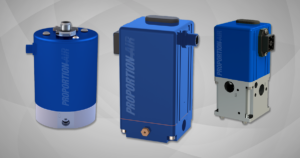What is the Hyperloop?
What is the Hyperloop
Elon Musk, well-known for his work as CEO of Tesla and SpaceX, dreamt up the idea for Hyperloop to revolutionize modern transportation. The system, Musk proposed, would carry passengers hundreds of miles at unprecedented speeds, allowing for transportation possibilities unmatched by other means.
There is one problem, however – the Hyperloop is still conceptual. Although many organizations have been working to bring Musk’s dream to life, creating a new form of transportation has proven to be a tough task. To encourage teams to continue work on the project, SpaceX announced in 2015 that it would sponsor a competition to design, build, and test Hyperloop concepts.
But what is Hyperloop and how does it work? In this post, we’ll take a look at how it works, how it could change the way we travel and what the future of Hyperloop looks like.
How it Works
The Hyperloop, in its simplest implementation, consists of two parts: the seating capsule and a series of tubes. The capsule works as expected – in it, passengers will sit during the transportation process, much like that of a subway. Because of the complexity of the design, there have been many different proposals as to the seating arrangements and capacity of the capsules.
Although the capsules are a key factor in the success of the Hyperloop, the tube carrying the pods requires a significant amount of attention. These tubes, which are kept at partial vacuum, are changed together to create a route for the pods to follow. Here is where it gets tricky, though – because the
Hyperloop does not have one proven method; the details behind it often vary from team to team. However, many teams use a combination of magnets and air pressure to glide the capsules along the track, accelerating it as needed while floating them on a sheet of air.
With the combination of reduced drag and little-to-no friction, the Hyperloop is able to glide through the tubes at incredibly fast speeds (or, at least, in theory). It should be noted, though, that the Hyperloop is not a mag-Lev train, but rather more comparable to an air hockey puck gliding along a table.
Traveling with Hyperloop
Hyperloop’s speed could bring radical change to the way we travel. By many estimates, using the Hyperloop for transportation could half that of the typical flight – that’s right, flight! One of the best examples of the incredible potential of Hyperloop comes in the supposed travel time between Los Angeles and San Francisco – about 36 minutes.
Speed, however, is not the only benefit offered by this mode of transportation; the design of Hyperloop should be more energy efficient and safe. In addition, Hyperloop shouldn’t have to work around weather changes and should offer convenience to a new set of travelers.
The Future
Much of the future of Hyperloop lies in the competitors of SpaceX’s competition. While there are companies currently working on prototypes, Musk’s involvement is virtually guaranteed by funneling contestants through his company.
After MIT took the design competition in January, SpaceX announced that the competition would be delayed from June to August 2016. With the changed deadline, a total of 30 teams will work to build and run functional pods.
Check back for a review of the 30 teams and their technological concepts.

 March Newsletter: Food Processing & Packaging
March Newsletter: Food Processing & Packaging  We’ve got the blues – and it’s a good thing
We’ve got the blues – and it’s a good thing